
Interview with ceramic artist YT-YF (Johor Bahru / Malaysia)
Share
I visited YT-YF in Johor Bahru in southern Malaysia.
Johor Bahru is located in the southernmost part of Malaysia and is the third largest city in the country with a population of 500,000. 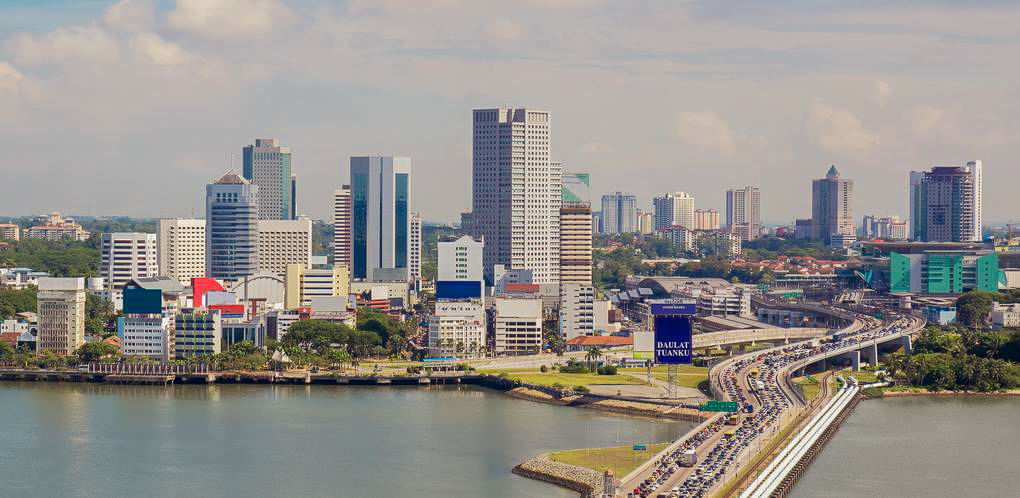
From Japan, you can fly to Malaysia's capital, Kuala Lumpur, and arrive there in about 40 minutes with a transfer at KL.
I boarded a late-night flight from Haneda Airport and arrived in Kuala Lumpur early in the morning. After a connecting flight, I arrived in Johor Bahru at around 10:30 a.m. I was prepared for intense heat, but the air conditioning was on inside and it was around 27°C outside, so it was a comfortable day in a cardigan and short sleeves. Singapore is located just to the south, and it is a city with a strong international flavor, with Chinese, Malay, Indonesian, and other people living there.
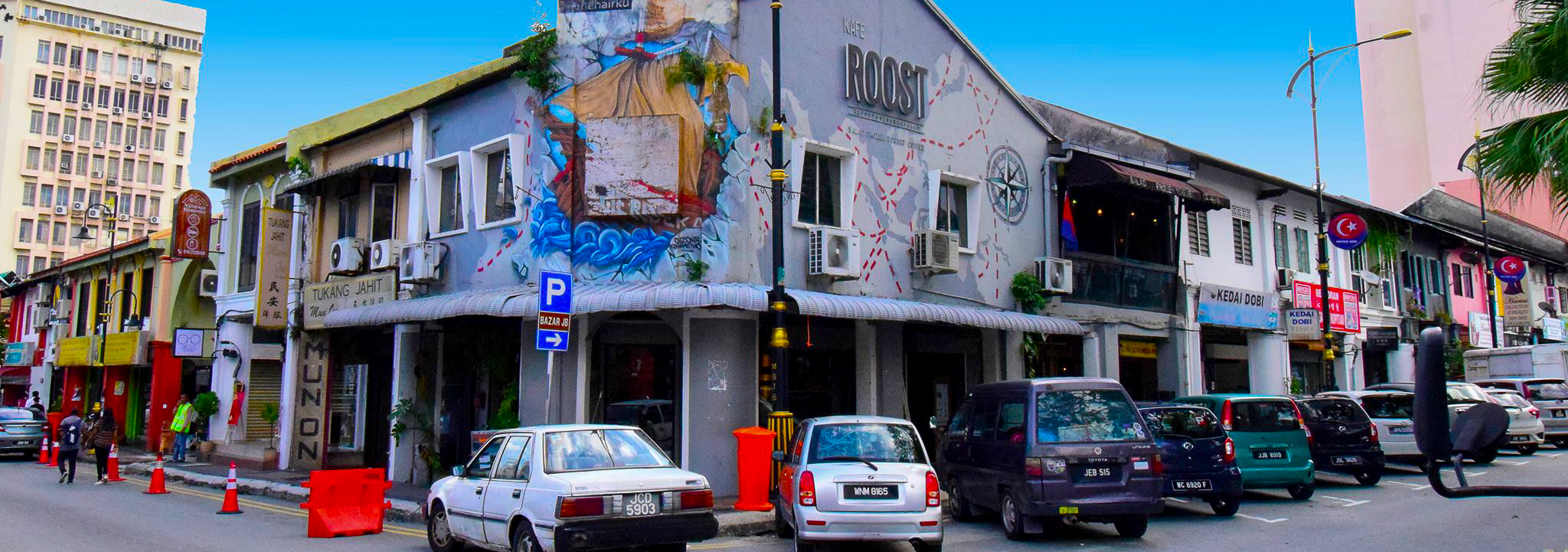
We visited YT-YF's atelier in this warm and welcoming city of Johor Bahru.
Please introduce yourself
"YT-YF" is a brand that the couple started about a year and a half ago in 2021.
They are a unit consisting of YT, a wife who is a ceramic artist, and YF, a husband who is also a ceramic artist. They sign their names on the bottom of the pots.
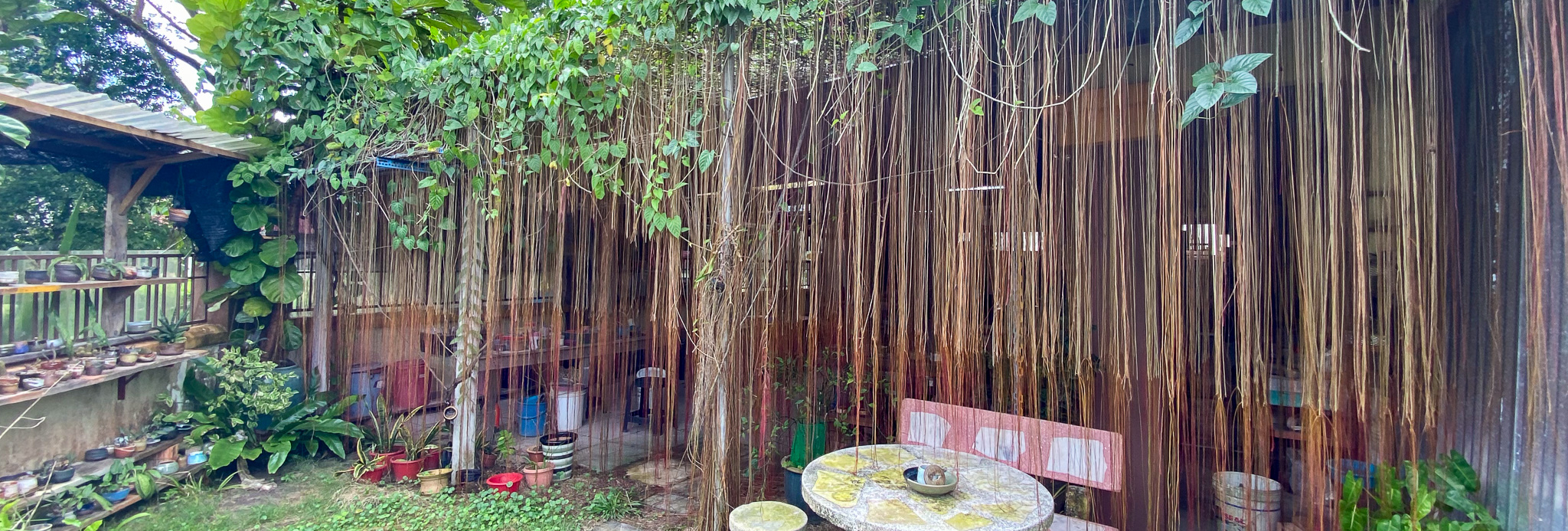
↑Kiln
We are Japan experts and have visited Japan more than 10 times in the past, and it has had a huge influence on our branding and work. We think it is a country with a wonderful culture. At the same time, we both studied abroad in London for three years when we were students, and we incorporate classical Western culture into our work.
YF was born and raised here in Johor Bahru.
I've always been a very aggressive and talkative boy. I'm the type of person who pursues whatever I want to do at the time to the fullest, and I like to do my best.
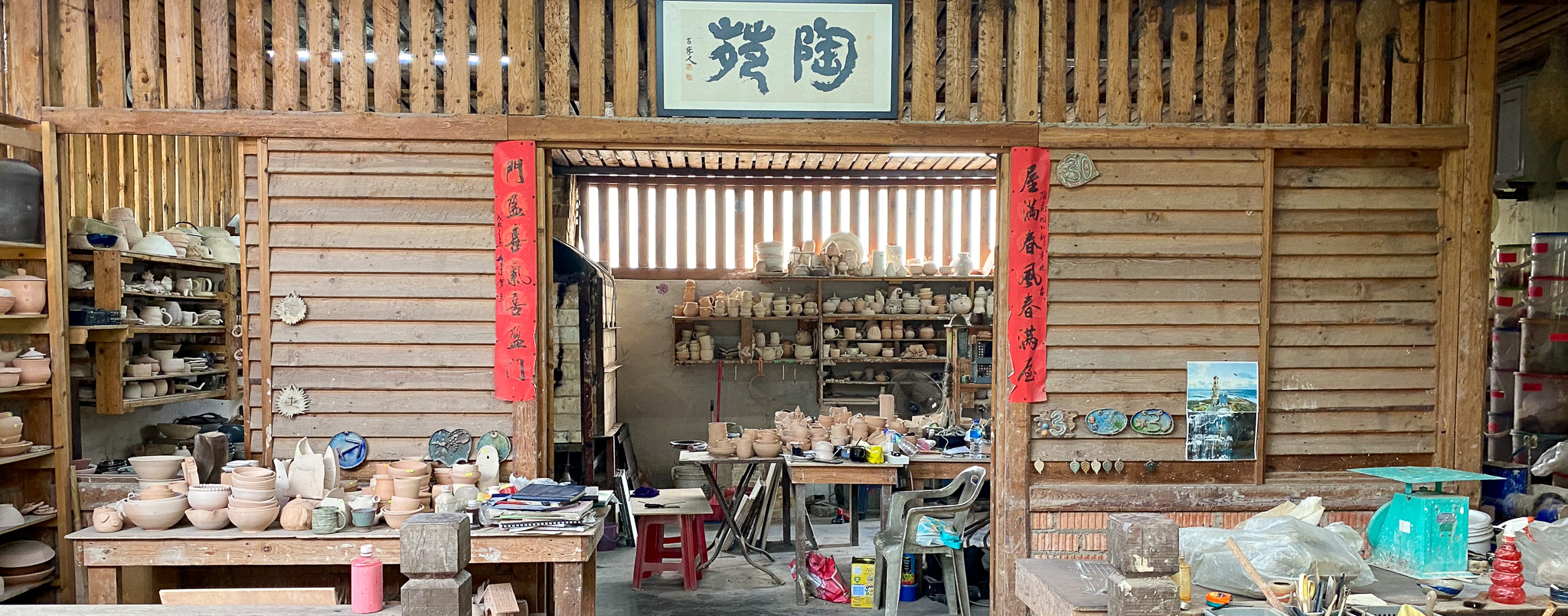
↑Kiln
YF is from a slightly remote rural area and came to Johor Bahru during high school. She is the complete opposite of me, always calm and able to act coolly. We have been together for a long time, and last year she gave birth to a baby boy. The boy was born as a wish, and is now 7 months old (he looks just like his wife, has big round eyes, and is an incredibly cute boy!). After the birth, we hired a helper and my wife is working, but our lives have changed drastically compared to before the birth. By the way, we are Chinese and Buddhist. We use Chinese in daily life, English at work, and learned Malay at school. I think most Malaysians can speak three languages.
We both studied design and feel that our opposing personalities are well-suited to our strong, rough yet delicate and detailed designs.
Please tell us about the business you are developing.
I am the owner of a hair salon called "Ojisan" in Johor Bahru New Town (owner: the salon was really named Ojisan). I am also good at interior design for shops and houses, and I have work to do. A while ago, I worked on the interior design for a shop in Harajuku. About five years ago, I was the Malaysian champion coffee trainer. Recently, I have been devoting myself to making pottery at home.
While raising our children, my wife works in pottery and design, as well as accounting and tax-related finance.
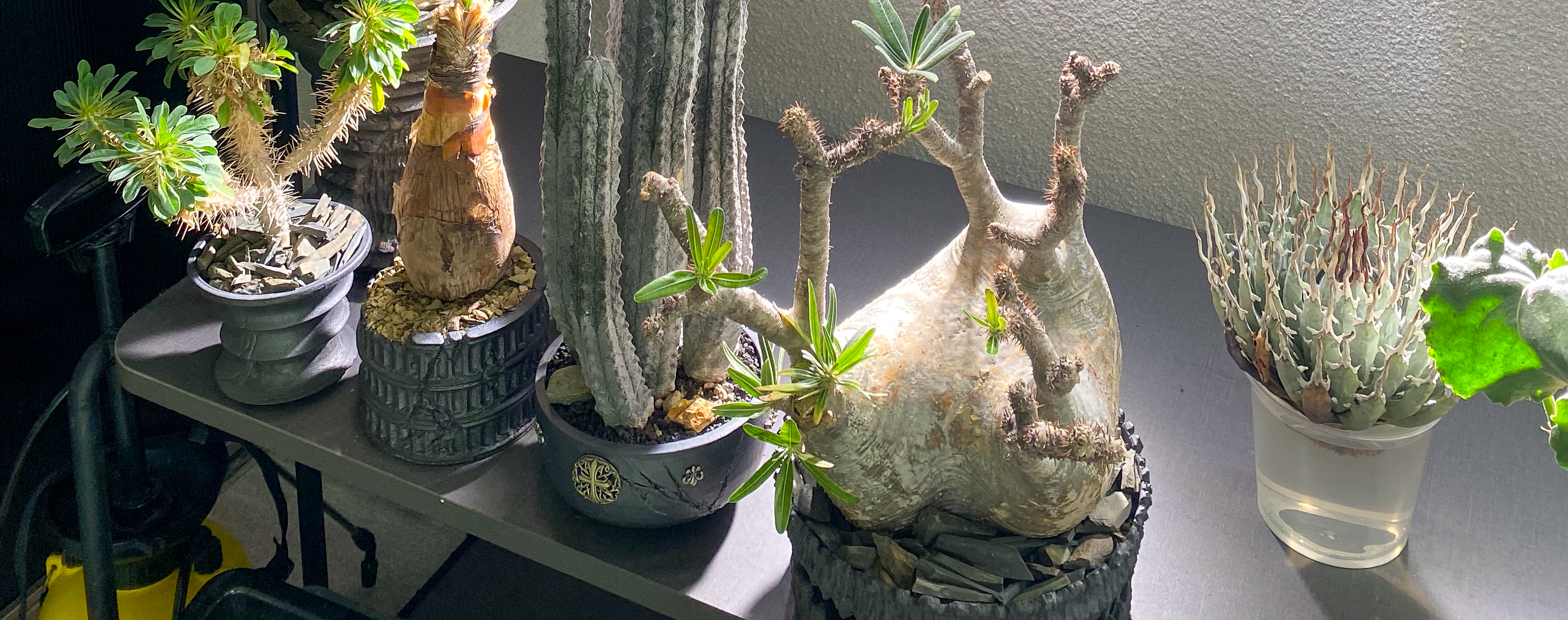
↑YT-YF's collection of rare plants
As mentioned above, I started working as a ceramic artist unit called "YT-YF" about a year and a half ago, and I specialize in making flower pots. I grow succulents and tuberous plants such as agaves and pachypodiums as a hobby, and I wanted to match them with the flower pots I designed! This is what started it all.
Thankfully, we do business with stores all over the world, mainly in Japan and Hong Kong, and we have also had the opportunity to be sold by OMBLE. Everyone says they want to come and see our atelier. You were the first person to actually come, so I was quite surprised (laughs).
During the pandemic, I learned how to make pottery from my master, and made my debut in 2021. As a designer, I have an endless supply of designs. From European culture, mainly in London, where I lived for many years, I get design inspiration from the arcs and columns seen in Catholic churches, and from Japanese culture, which I love, I get design inspiration from Kyoto temples, wabi-sabi, Zen, and minimalist culture. I respect all potters, but when I look at the works of Raw Life Factory and Onoe, the more I make, the more impressed I am. I think they are top artists all over the world. We make pottery believing in our own path and designs so that we can get closer to them.
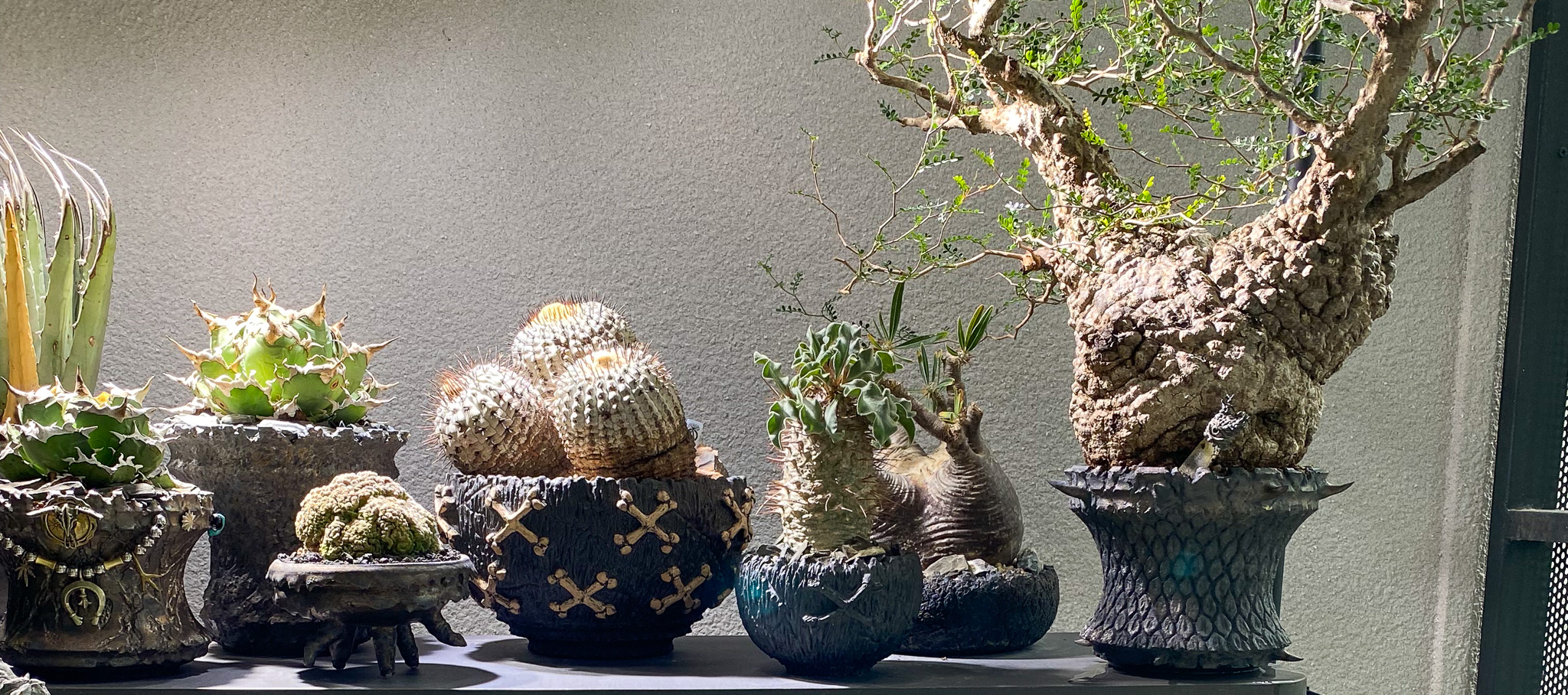
↑YT-YF's collection of rare plants
Please tell me the process of making pottery.
I use clay from Malaysia. There is no black soil like in Japan in Malaysia, so I blend 4-5 types of clay, such as red clay, white clay, and dark gray clay, to match the texture, or I use them as they are. The clay I use varies depending on the series and work.

↑The clay and glazes are neatly organized.
I use an electric potter's wheel. I don't make pottery by hand or by string making, I use the potter's wheel 100%. I've heard that potter's wheels outside of Japan are often counterclockwise, but my potter's wheel is clockwise like most of the potter's wheels in Japan, and I can actually switch it to turn left or right with the flip of a switch. I only have one potter's wheel, and my husband and I share it.

↑ Electric potter's wheel installed at home
The thing I'm particular about is not using a clay kneader, but just repeatedly kneading the chrysanthemum shape. I used to use the clay kneader in my master's studio, but I thought it would be better to knead the chrysanthemum shape myself in terms of the risk of breakage or damage. I take the time and effort to knead each and every piece.
Basically, I start by cutting a single piece, removing the core and killing the soil. I think the method is the same as Japanese artists. Most pieces can be completed in about 5 to 10 minutes. There are some complicated pieces that I don't really want to make, but they take about 10 to 15 minutes.
After shaping, the pieces are dried in a drying room. You might think that Southeast Asia is hot and humid, but surprisingly, it's just the right amount of dry. By using a high-performance air conditioner and high ceiling fans in combination, a reasonable size piece can be dried in 12 to 24 hours. In most cases, the piece can be carved the day after it is shaped, so it's easy to schedule. There aren't as many drastic seasonal changes as in Japan, so one advantage is that pottery can be made smoothly all year round.

↑The work being dried
I believe that one of the characteristics of our work is carving. When carving, we continue carving mindlessly as long as our body can handle it. For example, the damigi series sold by OMBLE is made as a symmetrical Western-style work, and the outside is carved, and damage is added to give the image of intense aging as if it had been hit directly by lightning. Including the glaze, it expresses a vintage look.
I add damage and chips during the carving process. It's fun to make something that is one of a kind even within the same series. In the work "Extra damigi," I put strong pressure with my fingers from the inside to the outside of the vessel, piling up the soil locally to decorate it, making holes for accessories depending on the series, and attaching skull marks made of different soil to the vessel. The distinctive visual aspects of YT-YF are created during this carving process.

↑Iron work shelf
After carving, I leave the piece to dry thoroughly in my home studio.
From here, the piece is taken by car to the master's studio, where it is bisque fired in a gas kiln. The temperature is about 900℃, and it is fired thoroughly at a relatively high temperature for about 24 hours.
Next, we apply the glaze. I think it really shows our unique style, and we source all of our glazes from scratch. We mix the ingredients ourselves to create our own unique blend of seven types. For example, gold, bronze, charcoal black, and silver black. Only my husband and I know the proportions of the blend. We are very particular about the glazes we make, and although it is difficult to explain in words, we make prototypes and change the firing location every time to study so that the color comes out as evenly as possible and each piece has its own unique character. We continue to use many different types of glazes, and we believe that this is an effort to constantly encounter new scenery, so we go through a process of trial and error.
The glaze is relatively light, but it is important to be careful not to apply it too thickly or too deeply. Depending on the piece, I apply it quickly with a brush, use a pen, or dip it in. I sprayed it with a compressor, but it tended to make the surface smooth, so I stopped. Depending on the piece, I also layer two or three types of glaze with a brush, which is one of my characteristics. I layer gold on a bronze base, or black, gold, and bronze. It's a trial and feeling. Basically, each piece is only fired once. I don't fire it after each layer of glaze.

↑We also have a particular focus on woody pieces.
The final firing is done in the same gas kiln as the bisque firing. The target temperature is 1250℃, and because it is a gas kiln, the gas pressure and temperature inside the furnace must be monitored, and black smoke is emitted, so you need to be considerate of your neighbors... It usually takes about two days to cool down. After the target temperature is reached, the piece is smoked to prevent air from entering and then carbonized to give the piece a unique look. After the final firing, the bottom part is carefully processed and the piece is complete.
Our works are categorized into series such as Damigi, Crown, and Cross, and including early models there are about 14 to 15 different types, so we would like you to collect the whole series.
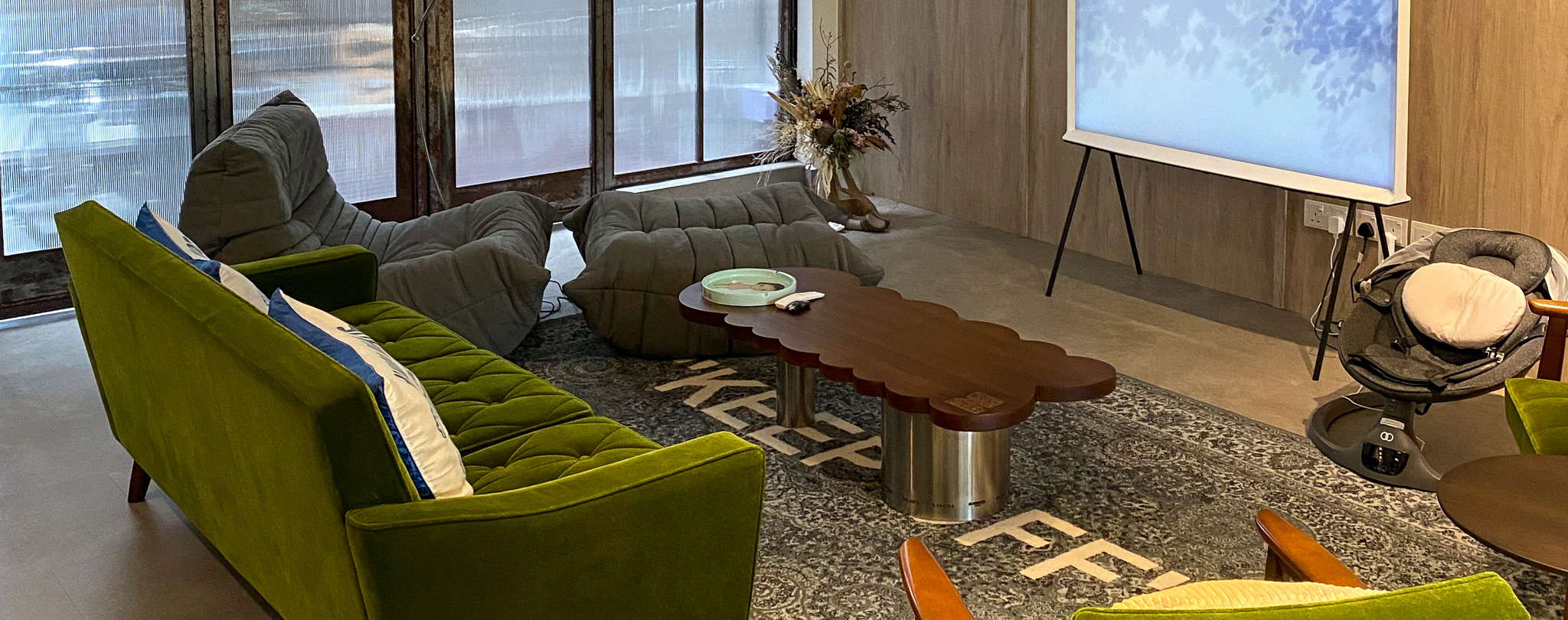
↑We spoke at the home he designed himself.
Please give a message to the people in Japan who have purchased your products through OMBLE etc.
Dear Japanese people, thank you very much for always purchasing YT-YF products. My husband and I create our products with love from the far southern tip of Malaysia. We will continue to work hard to provide you with wonderful products that will match your precious plants. Please continue to purchase our products through OMBLE.
We love Japanese culture and Japan. I proposed to my wife in Harajuku. My favorite city is Kyoto and I have traveled to most big cities, but we have a new family and would like to visit Tokyo, Osaka, and Fukuoka for the first time later this year. If we meet, please say hello.
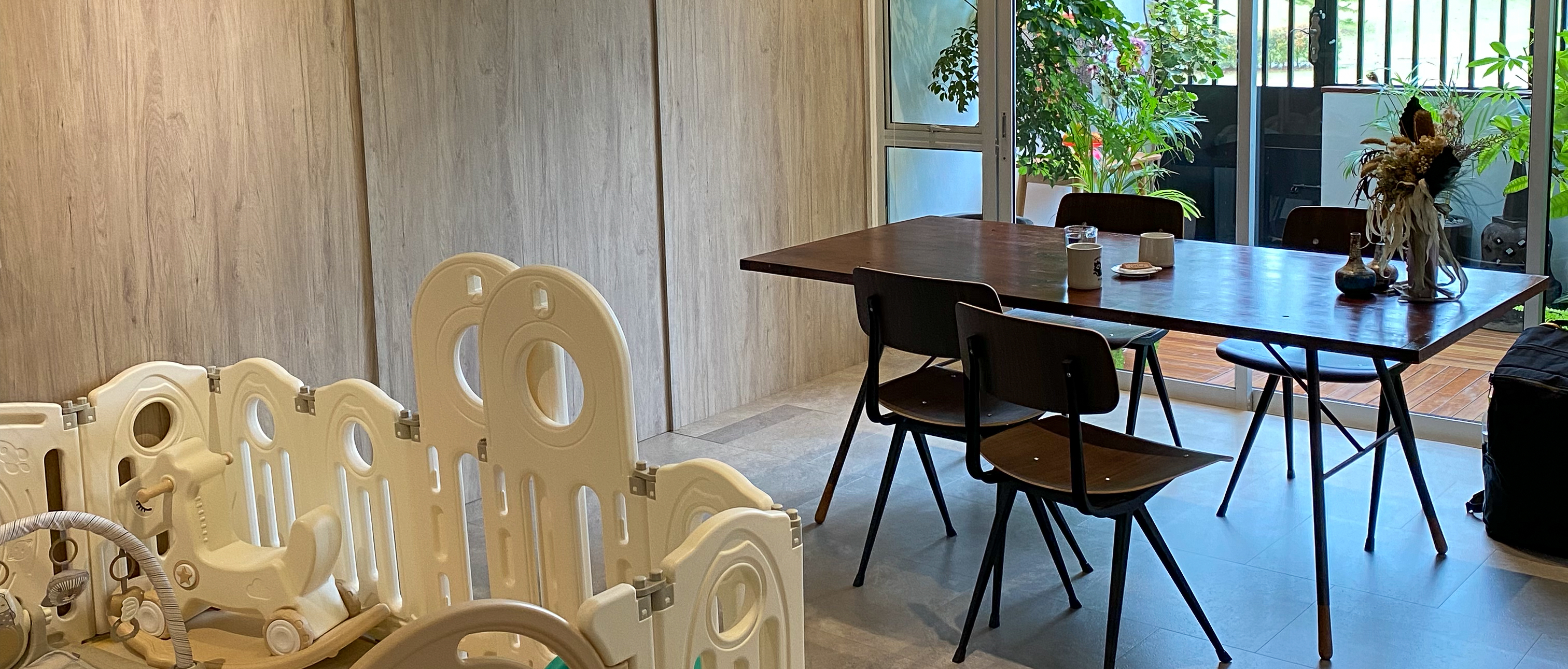
↑There is a greenhouse in the back, and plants are growing lushly.
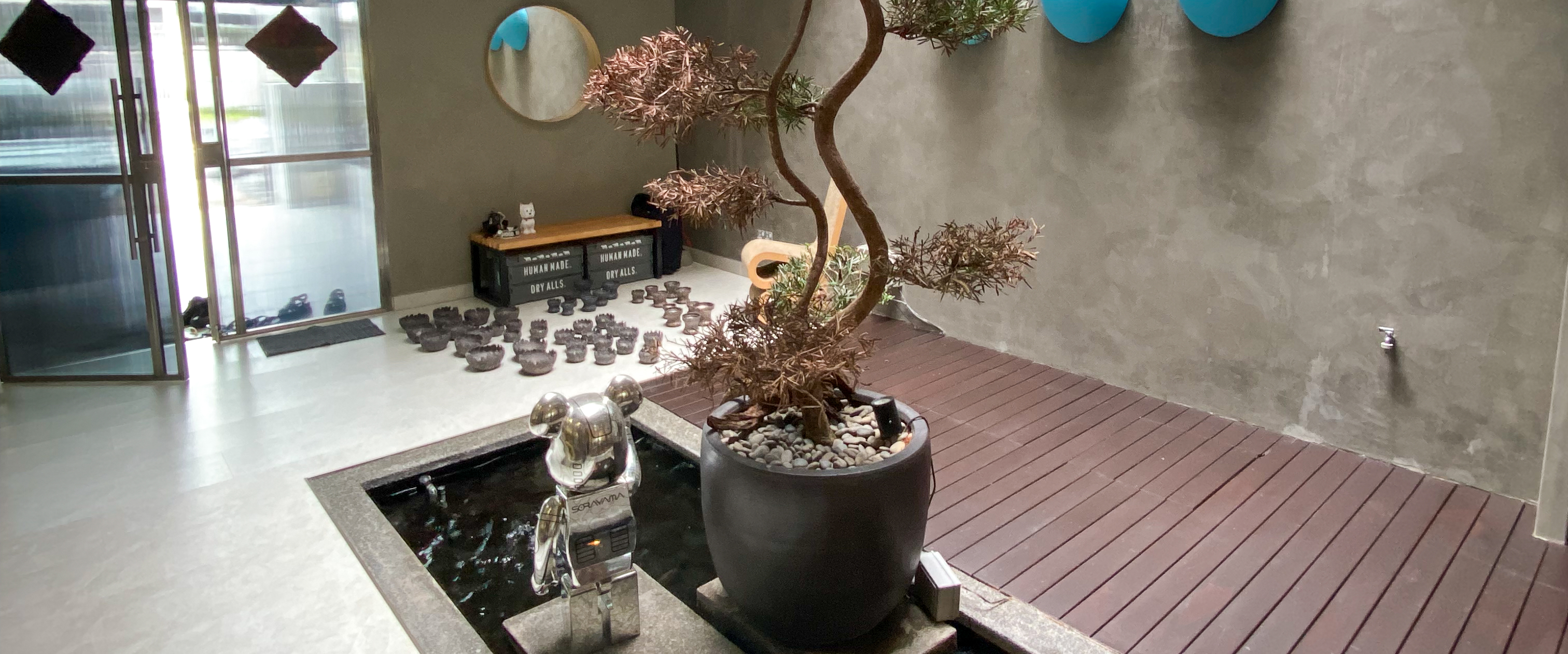
↑It was a home filled with wonderful taste...
OMBLE:
Thank you very much for reading to the end.
As a student, YT-YF was fascinated by Japanese and Western culture, which he incorporated into his own designs and became a successful designer. He is currently working as a designer while also developing various businesses, and is fascinated by pottery, which he began by planting his own collections in his own works.
Each piece is unique and wonderful, and I also use the pots in my private life. Meeting them was one of my dreams this year, and I'm glad that it came true early and that I have the opportunity to let everyone know them a little better.
We will be carrying many of YT-YF's works in the future, so please continue to check them out.
